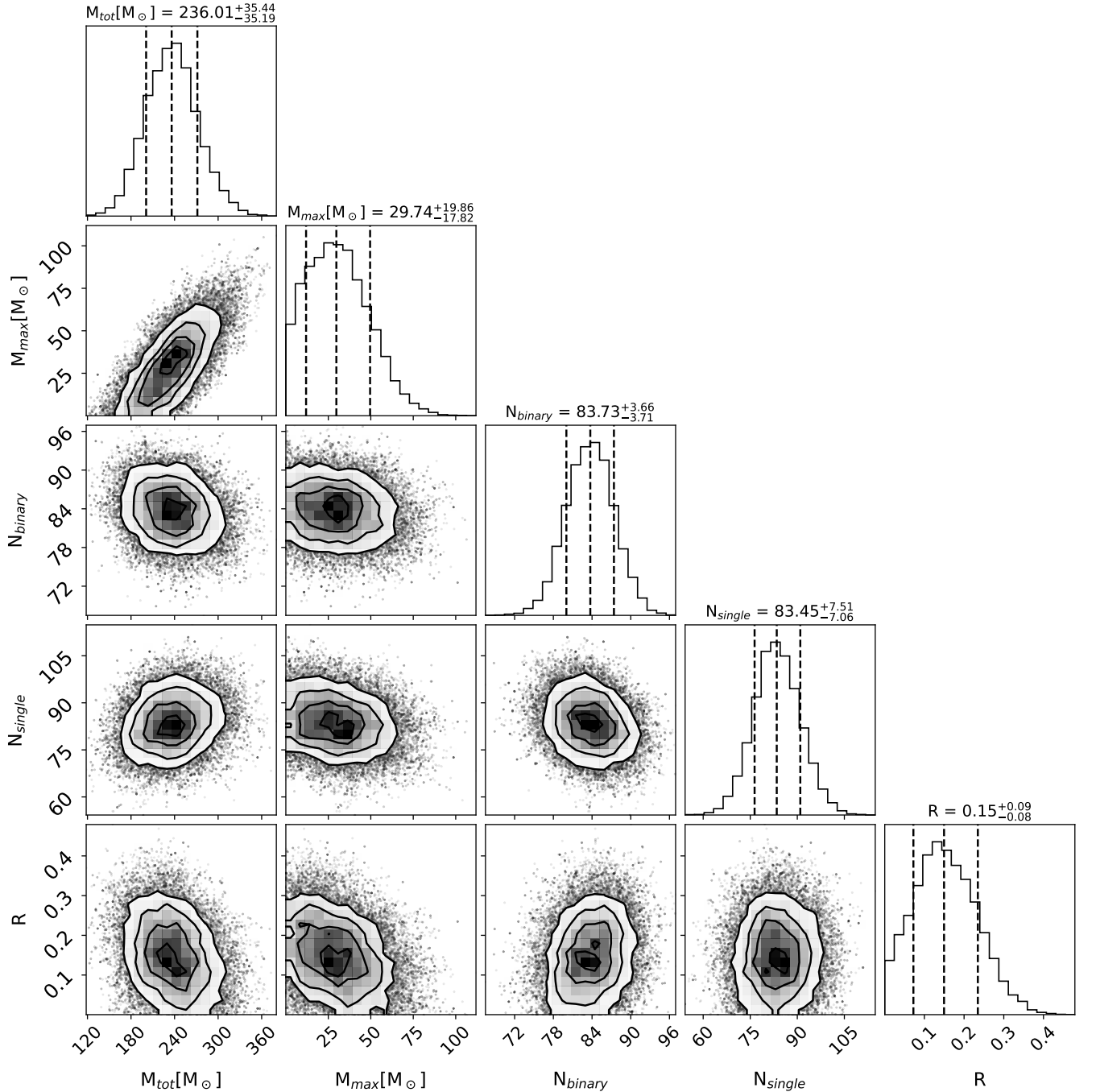
Researchers from the Xinjiang Astronomical Observatory (XAO) of the Chinese Academy of Sciences have made significant progress in in understanding how three-dimensional (3D) layered structures form within open star clusters. Using N-body simulations and analyzing 279 nearby open clusters in the solar neighborhood, the researchers identified a strong correlation between the number of member stars and the presence of spatial stratification.
The findings, published in Astronomy & Astrophysics, indicate that clusters with fewer stars generally lack layered structures, while those with more than 100 members are more likely to exhibit spatial layering.
Follow-up simulations demonstrated that the initial binary star fraction and the mass of the most massive star are key parameters influencing whether stratification emerges within a cluster.
Open clusters are gravitationally bound systems of stars formed from the same molecular cloud and share similar ages and chemical compositions. Therefore, they serve as ideal natural laboratories for studying the process of stellar formation and evolution. While previous studies have highlighted differences between the cores and outskirts of star clusters, their internal 3D layered structures and the underlying physical mechanisms remain poorly understood.
To address this gap, the researchers investigated the dominant factors influencing the formation of such spatial structures from a dynamical perspective, using N-body simulations. Their results show that massive stars (with masses exceeding 8 solar masses) drive strong mass loss via supernova explosions and stellar winds, which weakens the layered structure in the core region.
Meanwhile, binary systems delay core collapse and suppress stratification through energy equipartition, gravitational disturbances, and dynamical friction. In high binary-fraction models, the cluster becomes more isotropic, and the layered structure nearly disappears.
This study not only highlights the crucial roles of massive stars and binary systems in the structural evolution of open clusters, but also provides a new dynamical framework for understanding their formation and development.
With increased observational data and expanded sample sizes, future research will aim to further validate these simulation results and deepen our understanding of the stellar system evolution in the Milky Way. The researchers also plan to investigate additional cluster samples to test and refine the theoretical models.
This work was supported by the National Natural Science Foundation of China, the Chinese Academy of Sciences, and regional funding programs of the Xinjiang Uygur Autonomous Region.

The relationship between the number of member stars, cluster age, and threedimensional layered structure in 279 open cluster samples. Red circles represent clusters without a three-dimensional layered structure, while hollow circles indicate clusters with a 3D layered structure. The radius of each circle corresponds to the scale of the three-dimensional layered structure region. The red star marks the selected cluster OCSN 125. (Image by XAO)

EMCEE parameter sampling with an initial binary fraction of 100%, parameter analysis results at the 89 Myr simulation time. The first column shows the total initial mass of the simulated cluster, the second column depicts the mass of the most massive star in the simulation, and the last column represents the radius of the 3D layered structure. The remaining columns represent the number of single stars, and the vertical dashed black lines indicate the one standard deviation spread at the 16th, 50th, and 84th percentiles. (Image by XAO)

86-10-68597521 (day)
86-10-68597289 (night)

52 Sanlihe Rd., Xicheng District,
Beijing, China (100864)

